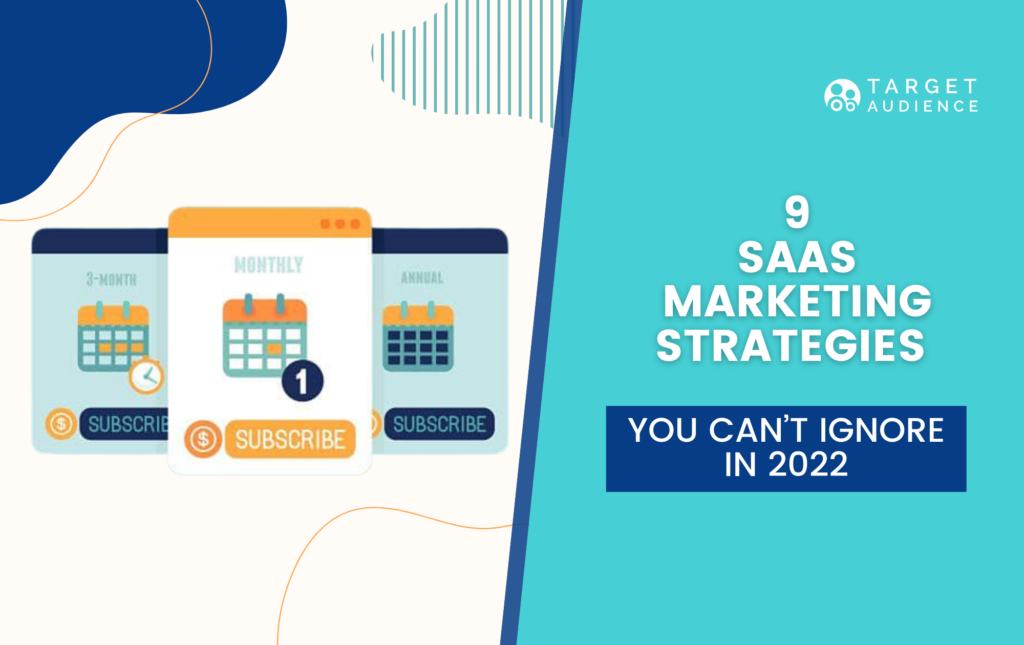SaaS has become one of the fastest-growing industries in the world in recent years. It is estimated that 99% (!) of organizations are currently using one or more SaaS solutions. According to Statista the SaaS market is growing by 18% each year and is expected to reach $171 billion in 2022. We could continue listing stats but you get the point – business is booming. In this article, we listed 9 SaaS marketing strategies that are known to bring substantial ROI.
The biggest challenges of SaaS marketing
In light of this fierce competition, SaaS marketers need to constantly find ways to stand out in the crowd and drive customers into, and through, their funnels. Doing so requires refining digital marketing strategies for SaaS, keeping pace with evolving technologies, and ensuring that each campaign reaches its maximum potential.
Reaching your niche customers most effectively
The most crucial mistake many SaaS businesses make is basing their entire keyword research on their solution, their competitors, or both, and failing to give prospects an entry-level understanding of what exactly the company offers. The key to gaining awareness is speaking directly to your customers. That means avoiding jargon in your messaging and focusing your efforts on realistic search terms a person would use when trying to solve a problem.
Measuring your marketing efforts precisely
There are three types of marketing metrics in SaaS:
- Funnel metrics – metrics related to your lead nurturing process and customer journey, such as email subscribers, leads, marketing qualified leads (MQLs) and sales qualified leads (SQLs).
- Acquisition metrics – metrics that help you understand how people discover you in the first place.
- Monetization metrics – metrics that help you calculate the lifetime value of each customer, so you can work out if your marketing spend is sustainable or not.
This is where it gets tricky. A customer lifetime value is the amount of revenue a customer generates over a set period by the average length of subscription. With SaaS products, the revenue for the service comes over an extended period of time. If a customer sticks around for a long time, the profit made from that customer can increase considerably. On the other hand, if a customer isn’t happy, they will churn quickly, and the business is likely to lose money on the investment they made to acquire the customer.
That is an important variable to take into consideration when measuring the performance of a SaaS company’s marketing efforts. And it’s also what makes it particularly challenging.
Picking the right marketing strategy
Freemium, free trial, or the traditional demo request model? Choosing the go-to marketing strategy for your SaaS product is extremely challenging. Even if you ask a fellow SaaS founder what worked for them, their advice probably won’t be relevant to you. Why not? Because different businesses have different target audiences, different pricing strategies, and well, completely different products. Understanding which model is right for you requires its own decision framework.
9 SaaS Marketing Strategies to Grow In 2022
1. Content Marketing
Content marketing is crucial for paid and organic search, as well as social media engagement. SaaS companies are uniquely positioned to take advantage of content marketing strategies because they help customers understand the value of your product. Plus, content marketing is very effective at reaching new audiences which you can nurture into leads and eventually, paying customers.
To compete in the crowded SaaS content marketing space, a company blog is not enough. It’s certainly important to have one, but it has become standard to produce high-quality, consistent content across all mediums. Infographics, ebooks, webinars, podcasts, and white papers – are all resources you can offer your prospects in exchange for their email address. Once you have a potential customer’s email address, they become a lead you can nurture into a paying customer through your sales funnel.
3 things to remember when you build your content strategy
- Content isn’t a sales pitch – The primary goal of any other content you produce is to bring traffic to your website and build trust in your brand. It is not there to be a direct sales pitch. It shouldn’t be promotional, but rather educational.
- Keep it useful – This brings us to the next section. Keep your content educational and relevant to the industries your product serves.
Ahrefs is a textbook example of something called product-led storytelling, which basically means educating users on how to get the most value from your product using marketing channels like the company blog, social media, etc.
The first and most crucial step is to identify and get to know your potential and existing customers. Then, use your industry knowledge to create practical, persona-driven content that will address their pain points and answer their questions. This is what made Ahref’s content strategy so successful: whenever people were searching for answers to SEO-related questions, Ahref’s was there with an educational video or article.
A good content strategy should brand you as an authority in your field. That way, prospects will be more inclined to approach you when the time is right for them to invest in the type of SaaS product you sell.

- Write for retention, not just acquisition – As we said content marketing is a powerful tool to attract new leads, but you don’t have to stop there. Write for your existing customers too. Say, you’re a B2B sales tech startup. Don’t focus only on basic how-to guides, mix it up with some more advanced stuff too. You can send out a newsletter with exclusive content for your top customers, or create a referral program. We’ll come back to this later on.
2. Invest In Video
When building your content marketing plan, emphasize video content. Marketers and SaaS companies can no longer ignore the fact that text-only content is slowly losing its importance next to video.
Why? Well, site visitors are 1.82 more likely to buy your service after they watch a demo video. According to research, viewers retain 95% of a message when they watch it in a video. The benefit is obvious: videos help your customers understand your product better, therefore they help increase conversion rates. Moreover, videos increase the amount of time customers spend on your websites and reduce bounce rates.
There are many ways in which you can leverage video marketing:
- Create product demos, tutorials, and how-to videos.
- Make video testimonials to build trust in your brand.
- Showcase new or unique features.
You can turn some of these videos into lead magnets by gating them and asking for customers’ email addresses to watch them. When HigherMe, a software designed to help HR teams in the hiring process, gated their demo video, their sales cycle was shortened by 7 days. In 2020, leads who watched HigherMe’s gated demo video had a 92% win rate.
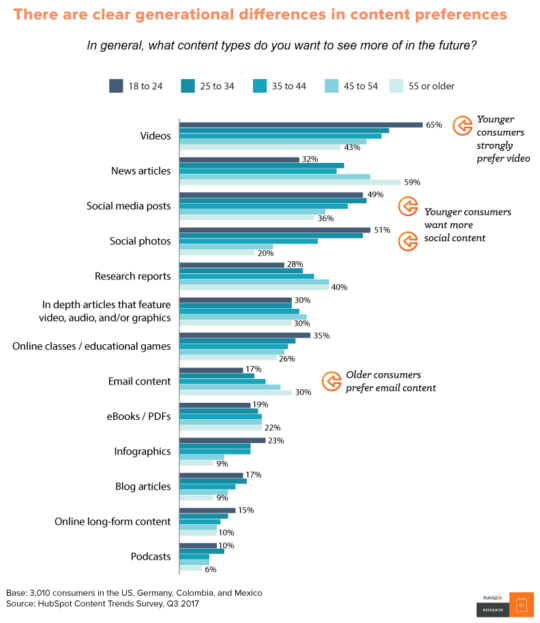
3. Email Marketing
Email marketing has evolved significantly over the years. It’s the most effective tool you have to nurture leads into paying customers and maintain relationships with existing customers. This is especially important for SaaS companies where you want your customers to continue to perceive value in your product and stick around as long as possible.
But let’s get back to lead nurturing. Once your prospect has downloaded their first bit of gated content, you can use the email address they gave you to start getting them more familiar with your service and build their trust. Automated emails can easily turn into spam, so it’s important to go about it the right way. Keep the first 7 or so emails engaging and educational.
SaaS companies, in particular, can also leverage emails in their onboarding process. A welcome email, an explanation of how to use your product, and a head-up of what to expect during the onboarding process go a long way. These emails need to balance providing actionable product training and persuasion to drive customers to take action.
The content of your emails must be personalized and built around personas. To avoid spamming people, and drive them to opt-out of your mailing list, segment your leads by persona and send them content that is relevant to their particular pain points and their buyer stage. Many automation tools can help with that.
4. Referrals
Referral marketing is a strategy to encourage existing customers to directly refer their network to your business. The most famous example of a successful referral strategy is of course Dropbox. Their referral program was 2 sided: both the user and the friend who received the invitation were rewarded with free storage space. Sounds quite simple right? This program helped Dropbox grow from 100K registered users to 4M registered users within 15 months. That is a growth rate of 3900%!
Referral programs work because at the end of the day people will trust individuals more than companies. In fact, a study by Nielsen found that 92% of consumers say they trust recommendations from friends and family, above all other forms of advertising.
It could be subscription discounts, free premium features, or an affiliate program – anything that encourages your current customers to spread the word and be compensated accordingly. Further, referrals save on acquisition costs (which can be especially high if you’re a B2B SaaS) and improve customer loyalty. And if you choose the right strategy, once you get the ball rolling the growth will be exponential.
5. Submit Your Product for Review
Yes, Google is powerful and so are YouTube, Facebook, and other search engines. But they are not the only places where potential customers look for SaaS products. There are many review sites that specialize particularly in SaaS listings. GetApp, Capterra, SaaSGenius, and G2 Crowd are only a few examples.
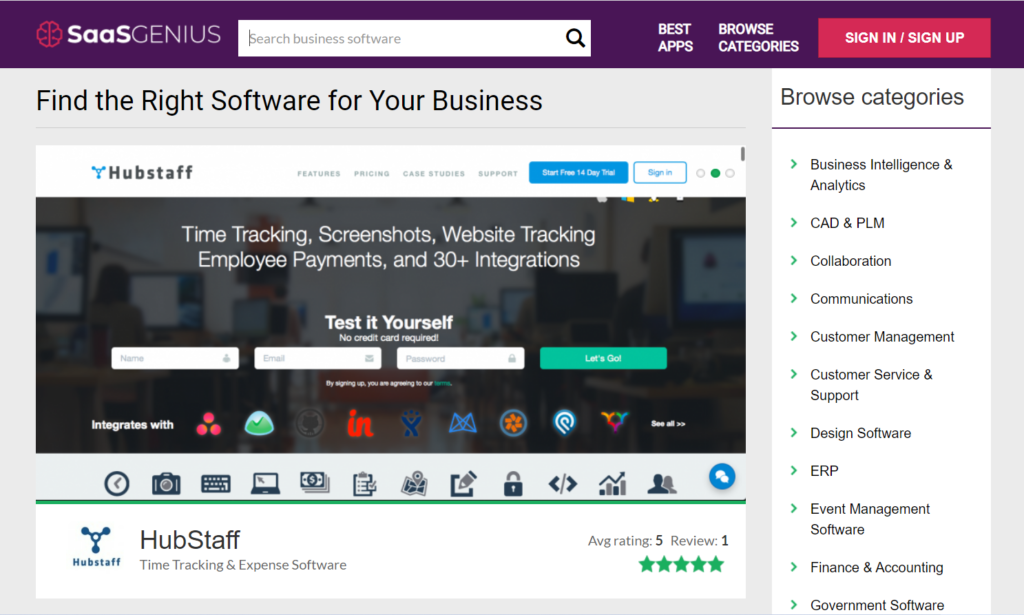
Submitting your product for a review will not only make it easier for potential buyers to find you, but it will also make it easier for them to compare you with the competition. It’s a quick and effortless way to build trust in your prospects.
6. Native Advertising
About 26% of Internet users use ad blockers, which significantly reduces the effectiveness of display and banner advertising. A good way to bypass this issue is using native ads. Essentially, those are paid ads that match the look, feel, and function of the media format in which they appear. In other words, they don’t look like ads, but rather mimic organic content posted on social media feeds and on the open web.
Native ads – projected to be a $400 billion industry by 2025 – have several other advantages:
- They receive 53% more views than traditional banner ads.
- They increase purchase intent by 18%.
- They can get around ad blockers.
A good native ad will use relevant content and engaging imagery to blend naturally into the platform. For example, take a look at this Penny Hoarder ad on Entrepreneur:
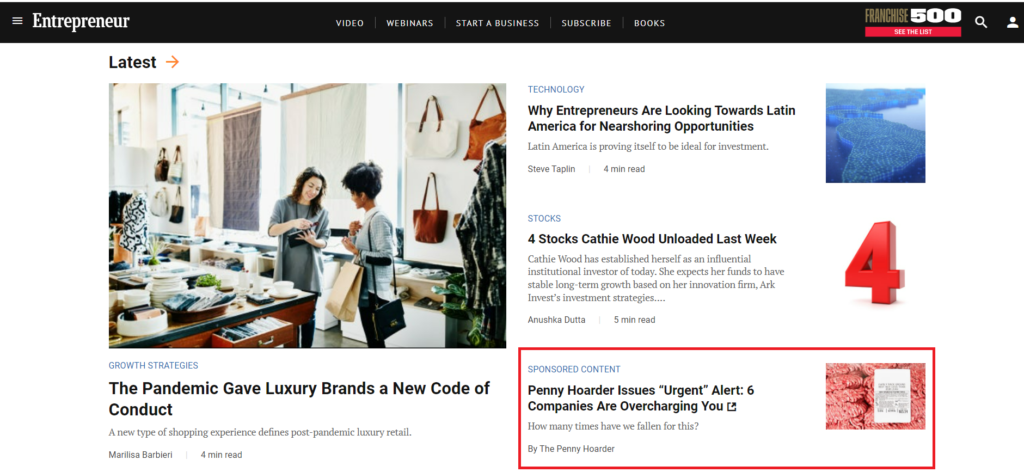
The Penny Hoarder is an American personal finance website. The sponsored content educates readers about how to avoid being overcharged. Besides the disclosure that it’s sponsored content, nothing gives away the fact that it’s actually an ad. It doesn’t look like one nor does it try to convince users to pay for a Penny Hoarder subscription.
Native ads are occasionally criticized for being deceptive. However, it’s safe to assume SaaS customers are more tech-savvy than the average Internet user and will recognize native advertising for what it is – a clever and effective way to increase brand awareness, and convert prospects through added value.
7. Paid Media
PPC advertising, which is a form of native advertising, plays a huge role in lead generation. When you combine the lead generation capabilities of a good outbound campaign with the lead nurturing capabilities of a good inbound marketing strategy, you create the perfect conditions for your SaaS business to grow.
A well-formed PPC strategy allows SaaS companies to reach their objectives faster, due to the ability to track metrics and optimize campaigns in real-time. These are a few of the ways you can scale your paid campaigns:
- Expand target keyword selection
- Budget pacing and reporting
- Landing page testing and optimization
Campaign data is extremely useful to isolate the elements that lead to increased CRO and close rate. Google Ads is not the only channel you can leverage for paid media though. LinkedIn is a great converter for the top of the funnel where you can promote premium content such as ebooks or webinars, and generate new leads.
Contrary to popular belief, Facebook is also a very relevant platform for B2B businesses. Lead gen ads allow you to gather user data directly from Facebook without having to drag users to your website. They are ideal for delivering forms in-app for gated content, for example. Quora is a useful platform too. The real benefit of Quora ads is leveraging it during the awareness and consideration phases by targeting high-intent audiences as they make pre-purchase research.
8. Unbundling
Platform unbundling is set to be one of the most prevalent SaaS marketing trends in 2022. Many SaaS companies have come to the conclusion that not all of the functionalities on their platforms suit every prospect. That’s what makes unbundling strategies so appealing.
Unbundling means that companies break their products into smaller parts that solve a specific problem. It allows marketers to create more targeted messages, and therefore increase the chances of conversions. After all, having to pay for a whole lot of features that you don’t need is likely to deter you from making a purchase at all.

9. Flexible Pricing
Unbundling is not the only thing to affect the price of your SaaS product. It is estimated that in 2022 the majority of SaaS companies will adopt flexible, data-driven pricing strategies.
The freemium and free-trial models have proved to be highly effective in recent years. Offering an extended free trial (between 7 and 30 days) gives users the chance to become familiar with the products and companies the chance to nurture that prospect into a paying customer. Alternatively, you can use the freemium model where a limited set of features are permanently free and you rely on users upgrading to paid features as their requirements increase.
Other attractive pricing strategies include:
- Per-user model: 50% of SaaS companies set their price depending on the number of people using the product.
- Pay as you go: In this model, users are charged depending on their usage within a set period. This model is lucrative to users with fluctuating needs.
- Business size: This pricing strategy offers different plans for small, medium, large and extra-large businesses.
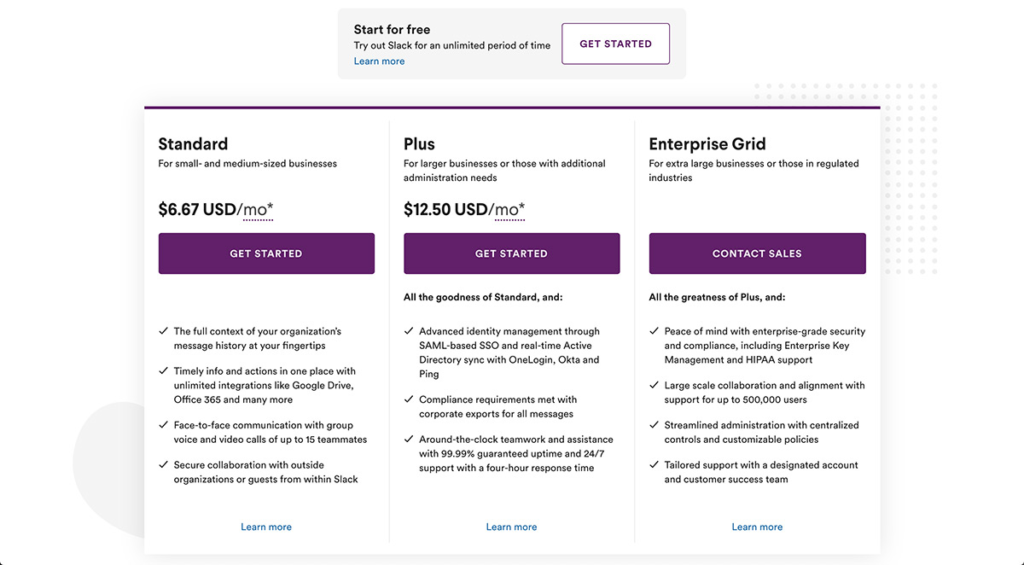
Final Thoughts
The competition in the SaaS industry is intense, and marketing requires a multi-faceted approach. As a SaaS company owner or marketer, it is crucial to leverage the top SaaS marketing strategies to stay ahead of the curve.
Invest in your content and email strategies. Build a referral program that your customers will genuinely find rewarding. Run native ads to boost brand awareness without making it too obvious and leverage all the data of your paid media campaigns. Adopt unbundling and flexible pricing programs to convert more prospects and last but not least, don’t forget to nurture the relationships with your existing customers too.


